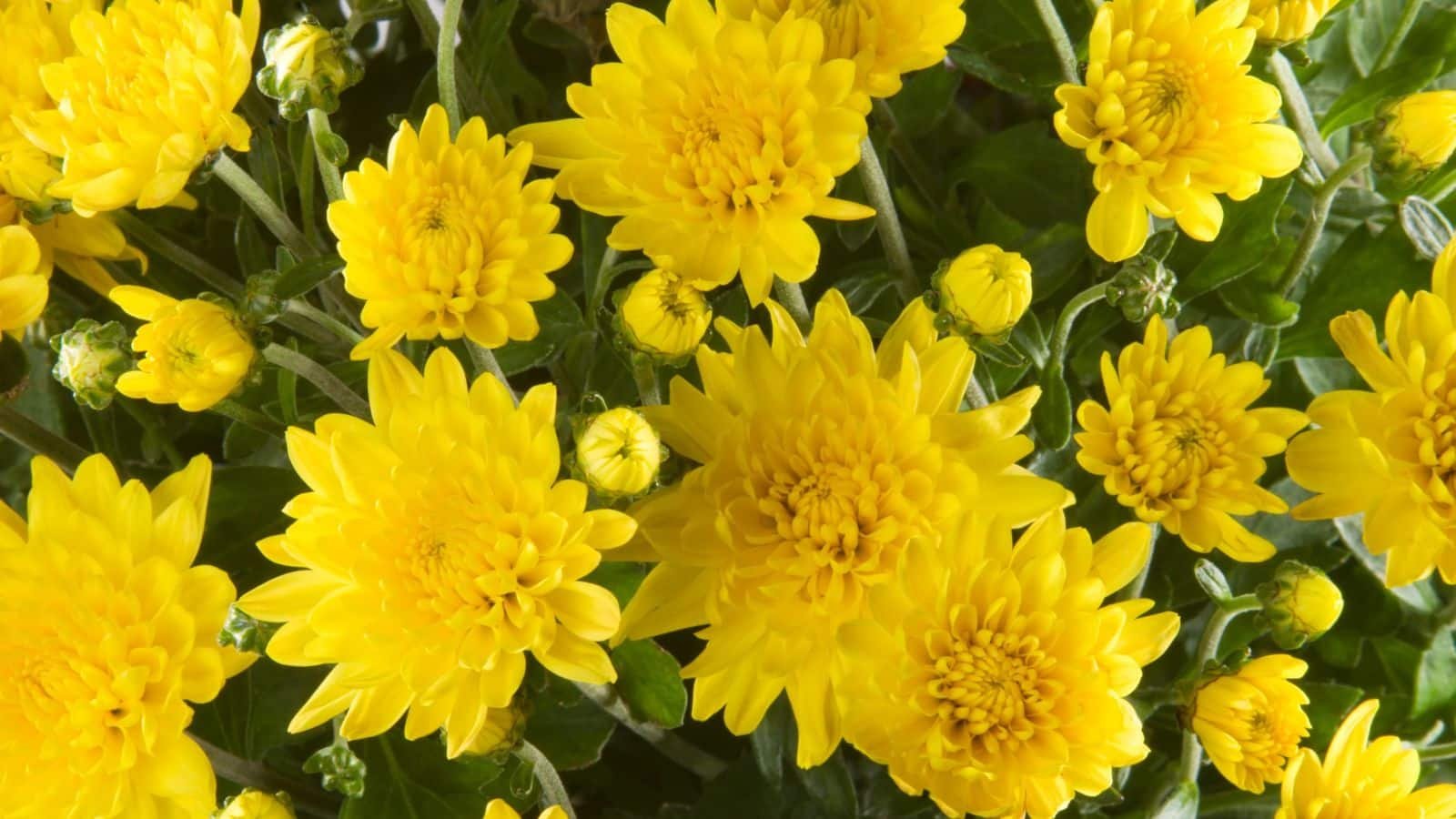The arrival of cornstalk entryways, heaps of ornamental gourds, and pumpkin spice lattes mean one thing: it’s mum season, people! Mums, also known by their full name chrysanthemum, are a staple of the fall garden. These vibrant, hardy plants are a favorite among gardeners for their stunning array of colors and ability to bloom well into the chillier temps.
However, choosing the right mum plant involves more than just picking the prettiest flowers. It’s essential to consider the plant’s health, your local climate, and how you plan to use it in the garden. Read on and grab some tips for selecting the most magnificent mums.
Know Your Mums
Are you setting this mum on your porch for a few weeks? Or do you hope to plant this mum in the ground and tend it year-round? Are you seeking an annual or perennial mum?
Most of the potted mums you find at the big box home and garden store come late summer are annuals, botanically known as Chrysanthemum x morifolium. Typically found in autumnal shades of mauve, orange, yellow, and deep burgundy, these plants are sometimes called “florist mums”.
Their mounding growth habit makes these mums best-suited to select sizes of containers, baskets, and temporary bare patches in a garden border. Florist varieties typically bloom late in the fall, and while they tolerate chilly temps, they will not survive a hard freeze. Therefore, it’s usually best to add these blossoms to the compost pile once they have finished blooming for the year.
If you are looking to plant chrysanthemums in the ground as part of a semi-permanent garden display, choose a perennial type. These are often referred to as “garden mums” or “hardy mums.” Most of these varieties are hardy in zones 4-8 and happily grow in full sunshine and well-drained soil.
Hardy mums produce underground shoots, or stolons, which enable them to survive year-round. In contrast, the florist chrysanthemum varieties produce very few or no stolons and won’t survive a hard freeze.
If you select a hardy mum, be sure to get them planted in the ground at least 6 weeks before your last frost. This will give them plenty of time to establish roots.
Pick a Healthy Plant
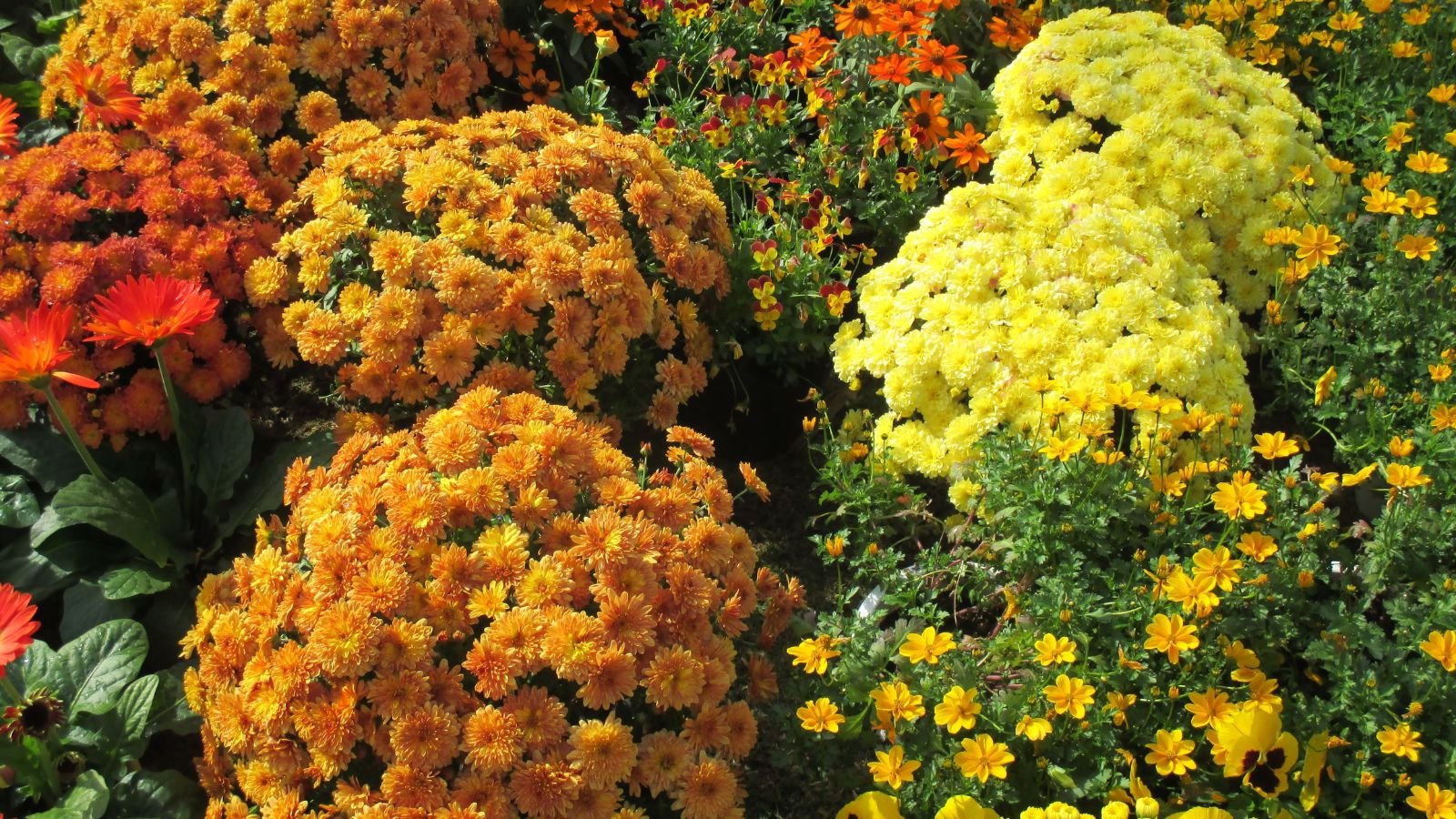
Whether you’re buying a mum, a magnolia, or a mandevilla, you’ll want to pick a healthy plant. Chrysanthemums are susceptible to several diseases, like verticillium wilt, powdery mildew, and botrytis, as well as pesky aphids and leaf miners.
To ensure the best possible performance, avoiding selecting florist mums that are shipped long distances and packed onto overcrowded retail nursery tables; these are especially prone to insufficient air flow and over- or under-watering, conditions that encourage the spread of pests and disease. Remember, these flowers are plentiful during the late summer and fall months—don’t waste energy trying to nurture a sickly plant back to life!
Foliage and Stems
Start by examining the foliage and stems. Look for vibrant, deep green leaves with no signs of yellowing or wilting. Stems should be lush and not leggy.
Plant Shape
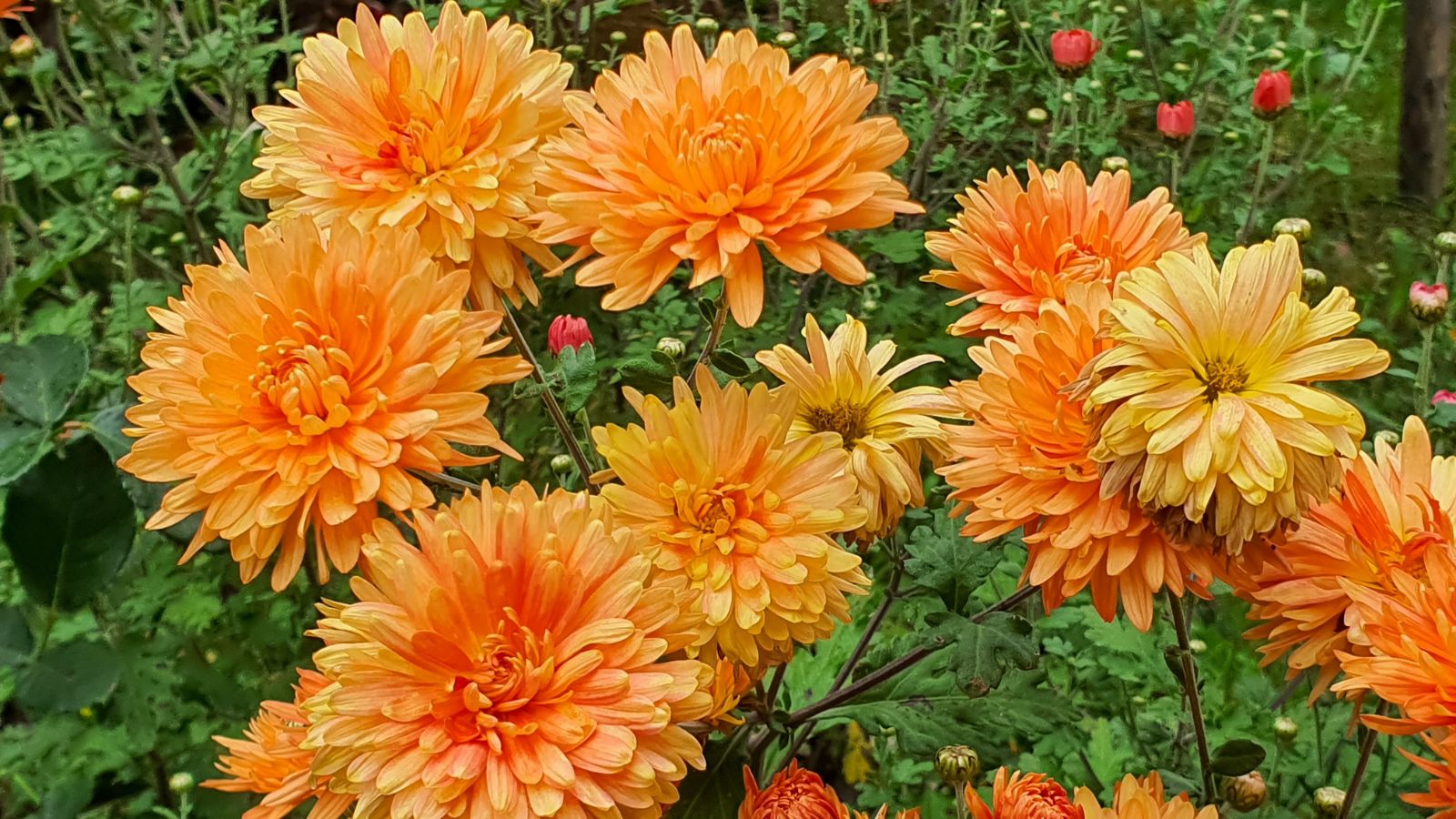
Mums should be bushy and symmetrical in shape, with plenty of stems. Check for broken or crushed stems; the buds on these stems may not bloom. Avoid droopy, under-watered plants. Chrysanthemums are thirsty plants, and those confined to nursery pots are especially prone to drying out. They will typically recover after a deep soak, however, repeated drought stress will eventually produce substandard blooms.
Roots
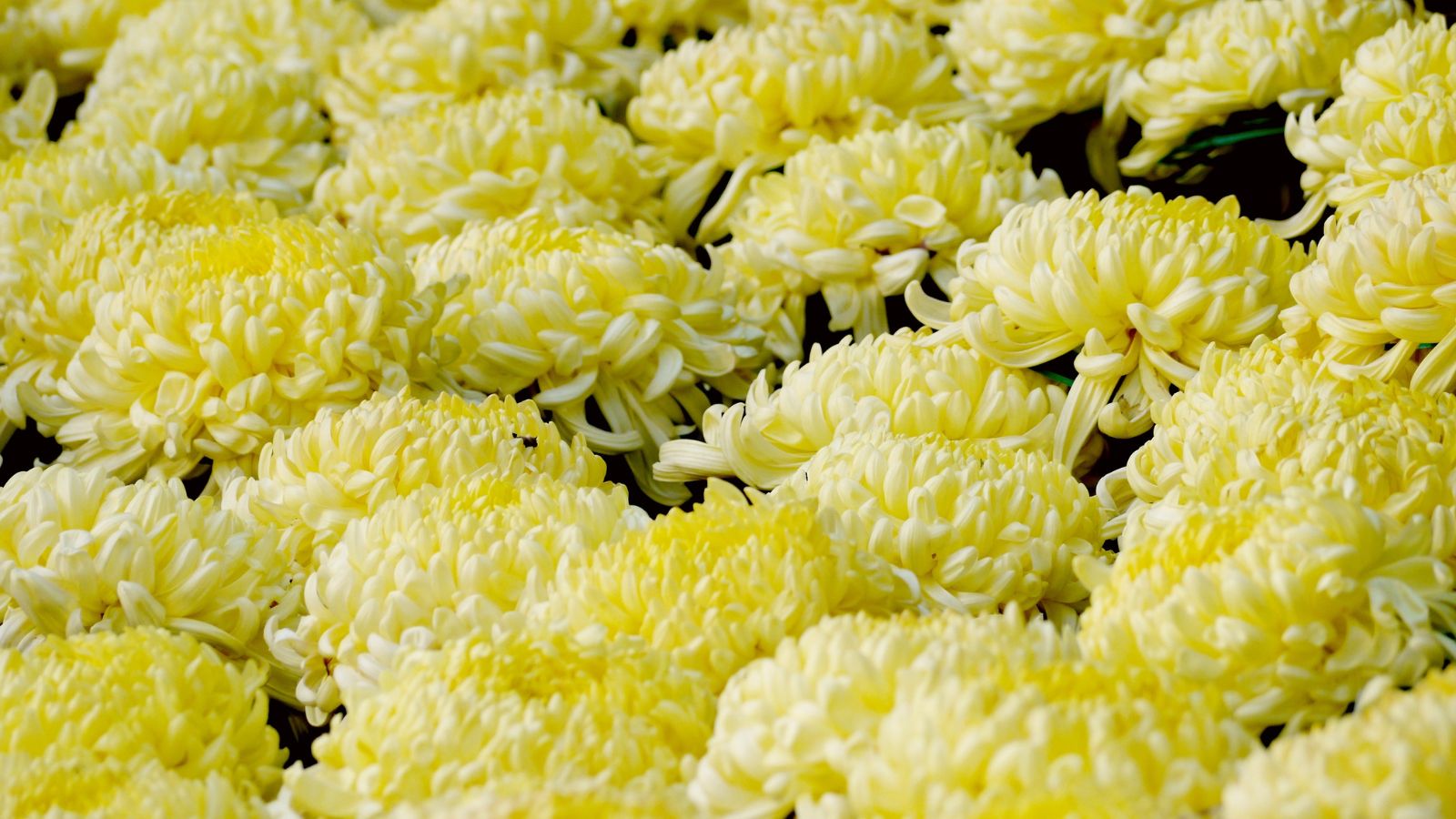
The surface of the soil should be slightly moist. Slide the whole plant out of its nursery pot to check the roots. Plant roots should be pale in color and firm to the touch. Roots that are mushy or dark in color are signs of root rot.
Buds vs. Blooms
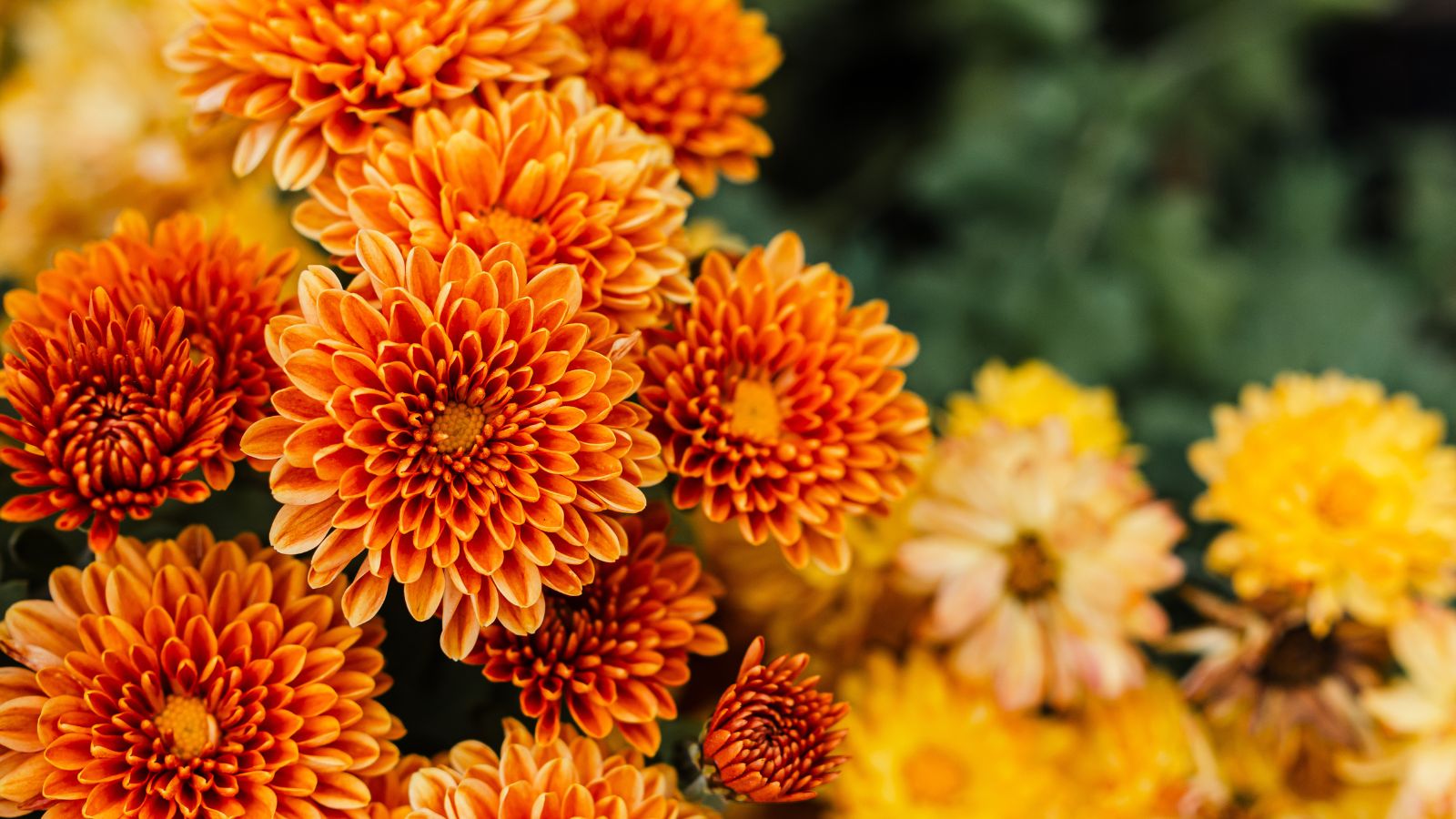
Are you looking for a long-lasting fall floral display, or do you need maximum impact right away? If you’re looking for the latter, go ahead and grab mums that are already in full bloom.
However, keep in mind that plants with the fewest open flowers now will put on a brilliant display for much longer. Select plants with tight buds that are just starting to open. A few open blooms are helpful if you’re seeking a specific flower color. When properly cared for, chrysanthemums can easily bloom for 3-6 weeks.
Wait For Your Fall Weather to Arrive
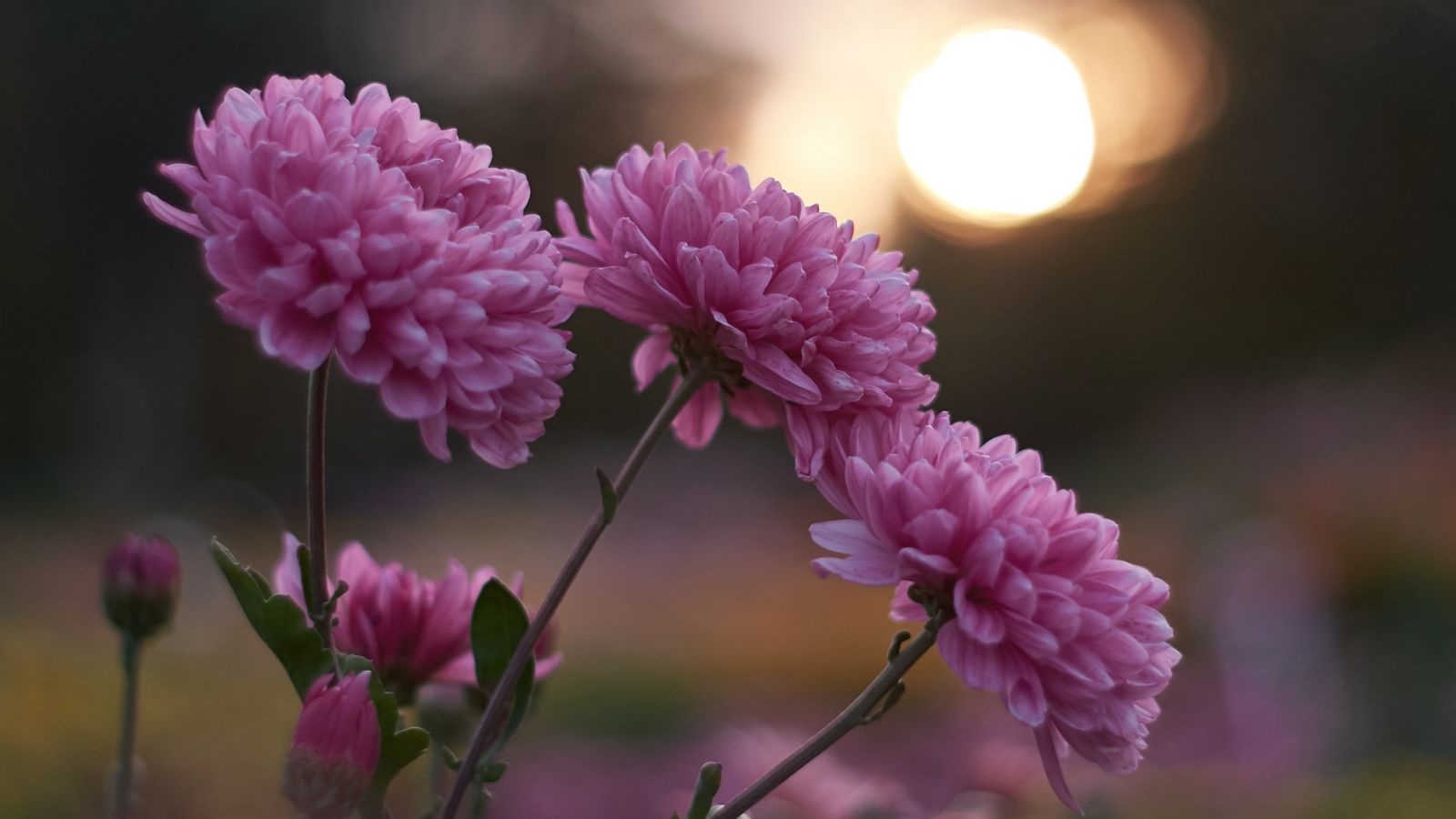
Mums are fall-blooming plants and will flower steadily during cool, and even slightly chilly weather. Writing this on Labor Day in central Vermont, it’s a mild 68°F (20°C), prime “mum” weather. However, a quick internet search informs me that it’s currently 93°F (34°C) in New Orleans—that’s a big difference!
Warm temperatures mean that flowers will open and subsequently fade much faster. While you may be tempted to get some potted mums on the porch during that first week of September, know that they may look pretty ragged before the end of the month if you have plenty of 90-degree days left (~30°C). Be patient, and wait for the cooler weather to actually arrive in your garden region.
Flower Types
This last tip is based a bit on personal preference. For those gardeners seeking a little more variety among the usual offerings, you’ll be pleased to know that chrysanthemums actually come in many delightfully different colors, configurations, and flowering habits.
The National Chrysanthemum Society classifies varieties based largely on flower shape. A quick scan through the different classes will give you an idea of just how many options there are to choose from!
Irregular Incurve
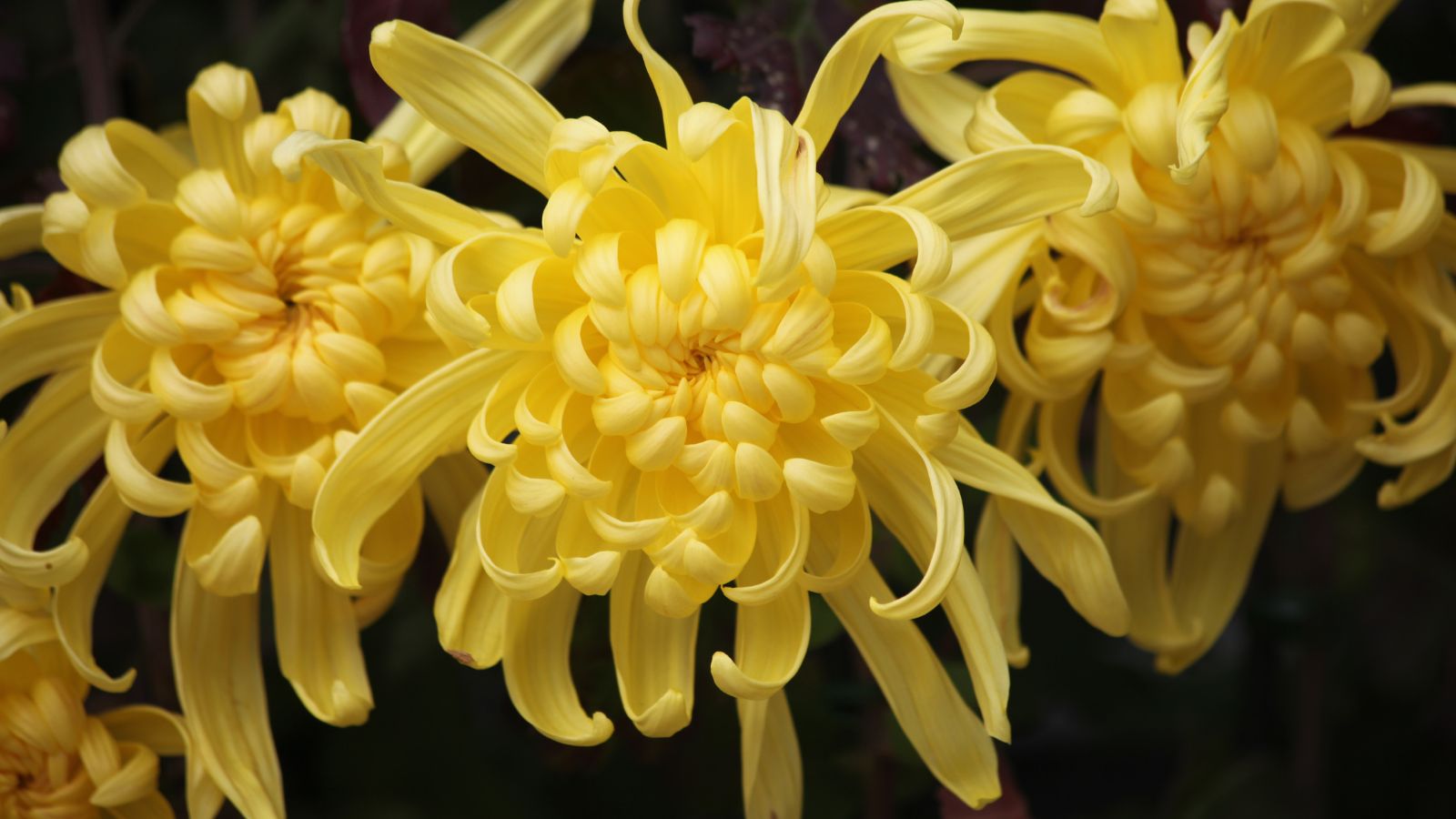
These are the largest blooms of the Chrysanthemum genus. Petals curve in towards the center, with the outer ones being very loosely splayed. The large, show-stopping blooms on these plants lend themselves to being a cut flower or specimen planting. Try the lovely bronze ‘Crimson Tide’ variety.
Reflex
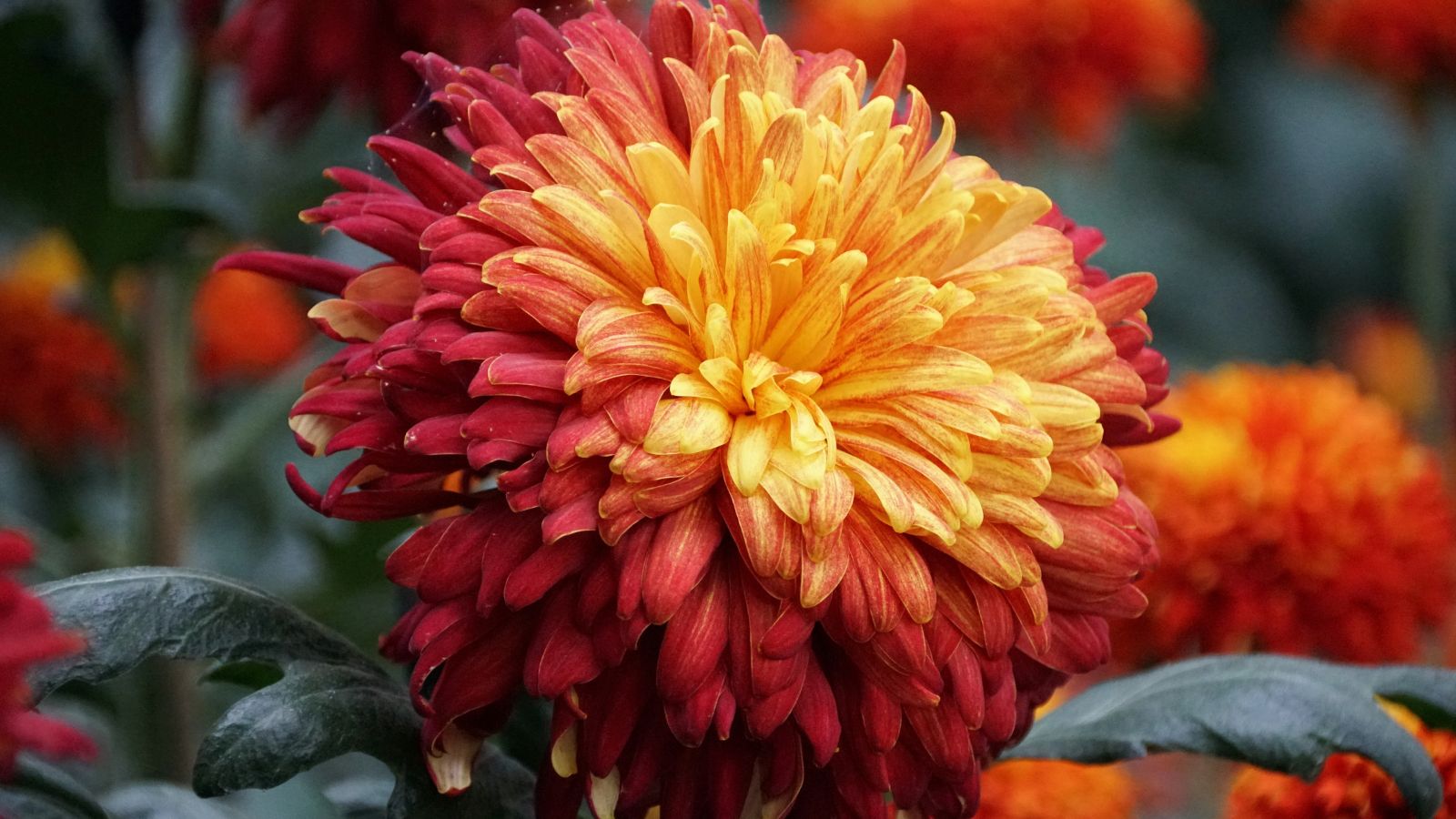
Varieties in this class are characterized by their overlapping petals that arch outward and away from the center. The centers of the blooms are slightly flattened. Examples of reflex mums include rich red ‘Samson’ and orange ‘Paint Box’, which have heavily overlapping shapes that almost resemble bird feathers.
Regular Incurve
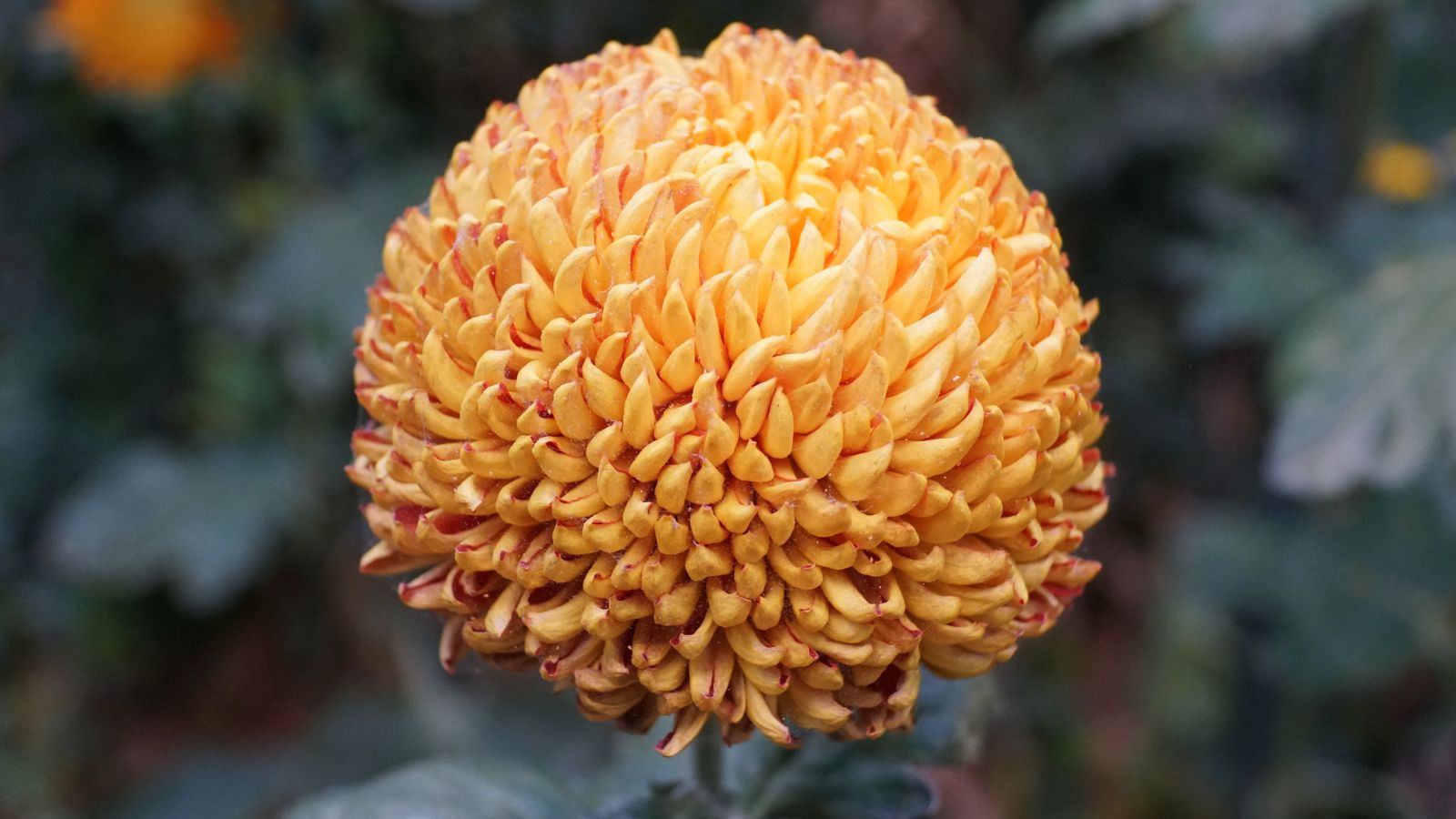
Like the irregular incurve types, this class is characterized by petals that curve in towards the center. They are uniformly curved all the way around the flower head, giving them a compact look. Try pale lavender ‘Le Mans’ or creamy white ‘Gillette’ for a fresh take on fall color.
Decorative
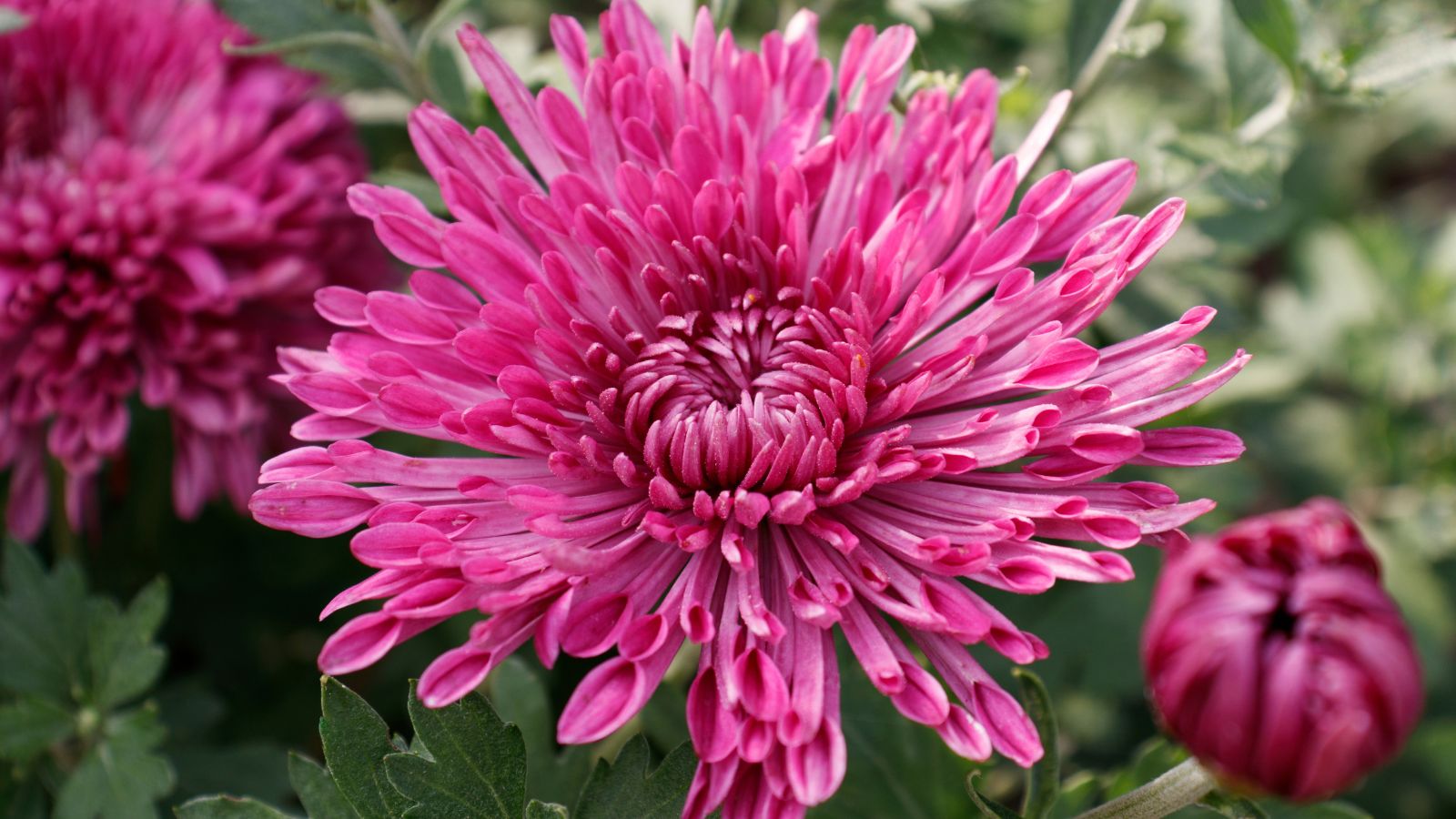
Cultivars in this class are more flattened, with both incurved and reflex petals. Try pairing golden bronze ‘Indian Summer’ or ‘Fireglow Bronze’ with purple asters for a bold contrasting border.
Intermediate Incurve
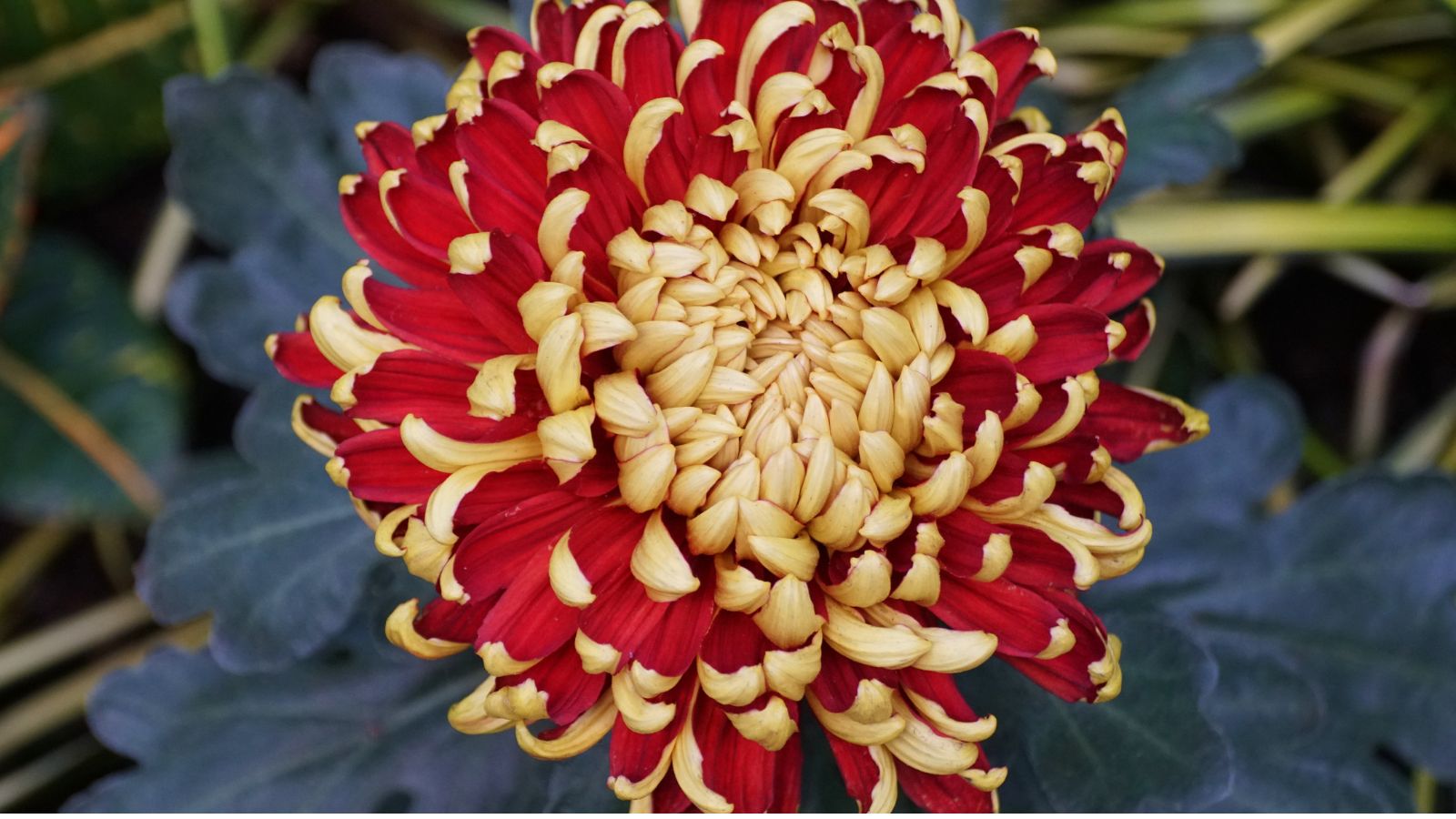
Somewhere in between the irregular incurve and regular incurve, this class typically has smaller blooms and a more open appearance. ‘Ja Dank’ has clear white blooms, while ‘St. Tropez’ boasts two-toned red and gold petals.
Pompom
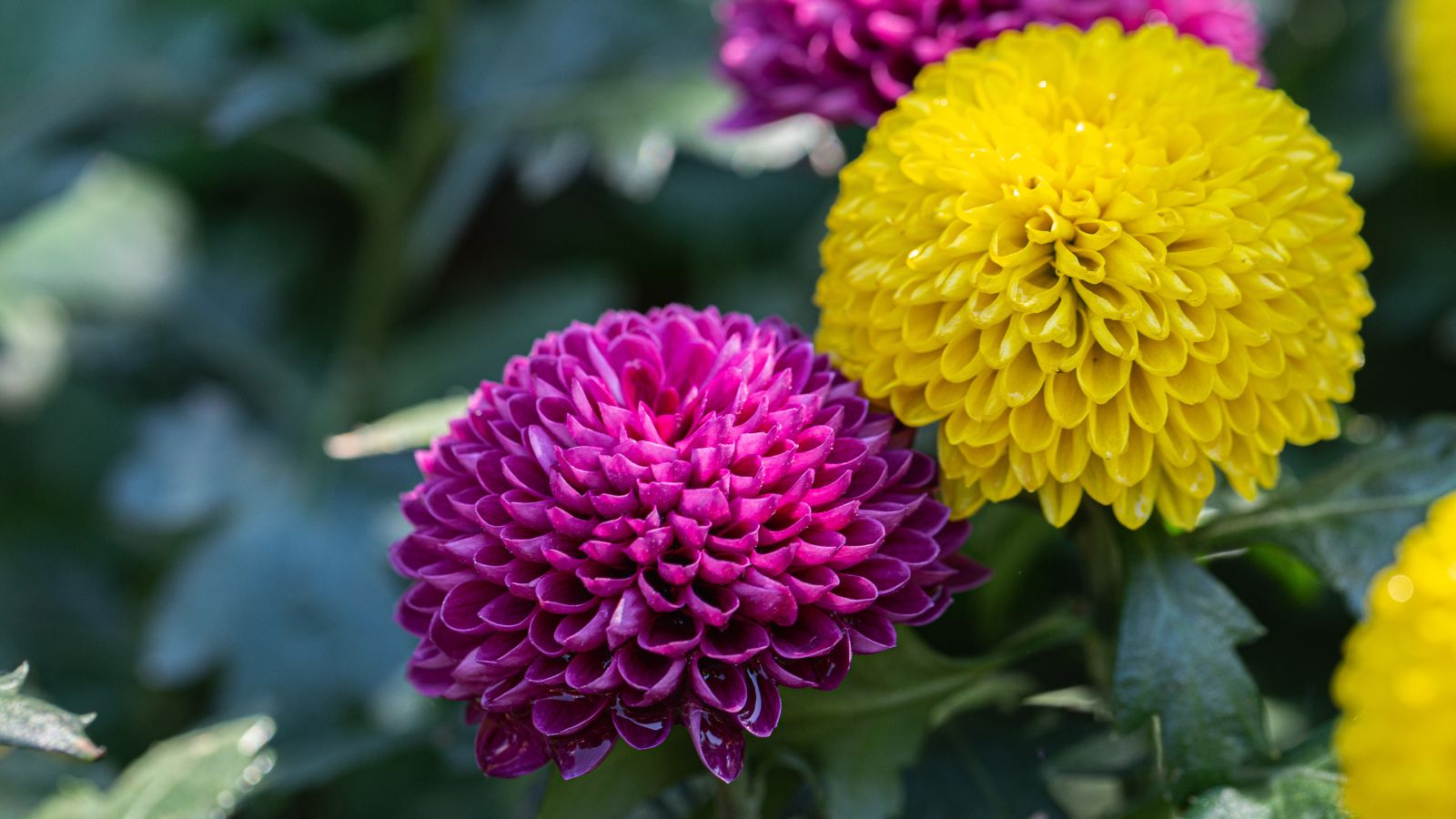
Masses of small, round blooms cover the plants in this class. They are popular as cut flowers, but their small shape make them well-suited for container plantings. too. Try ‘Feeling Green’ for a totally unique pop of yellow-lime in the garden.
Single and Semi-Double
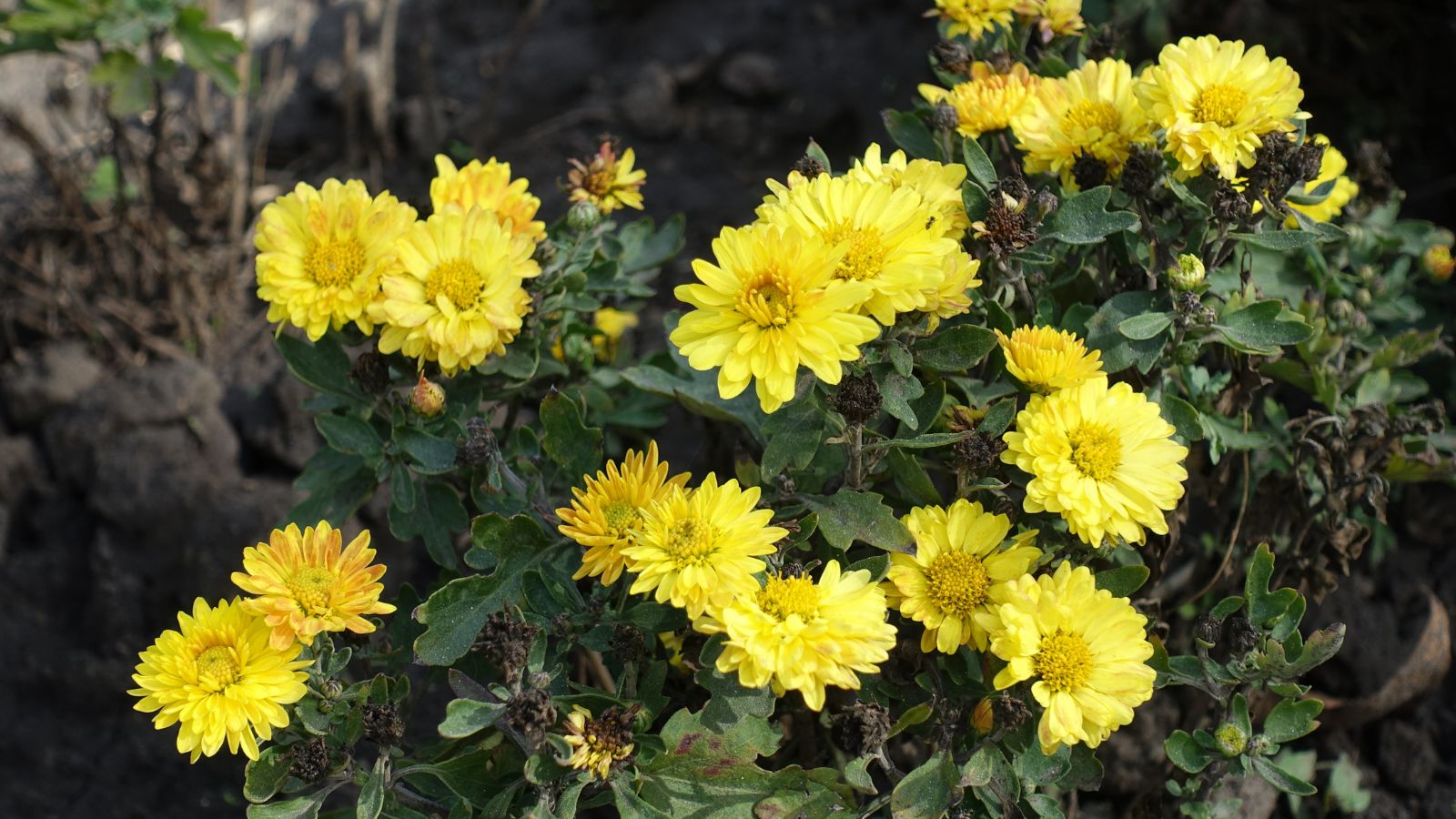
This class features single disks surrounded by rays of petals. The blooms look very similar to daisies. Cheery, pink ‘Clara Curtis’ and apricot-colored ‘Bolero’ are compact types that typically grow just 1-2 feet tall; both are wonderful additions to containers or positioned in the front of mixed perennial beds.
Anemone
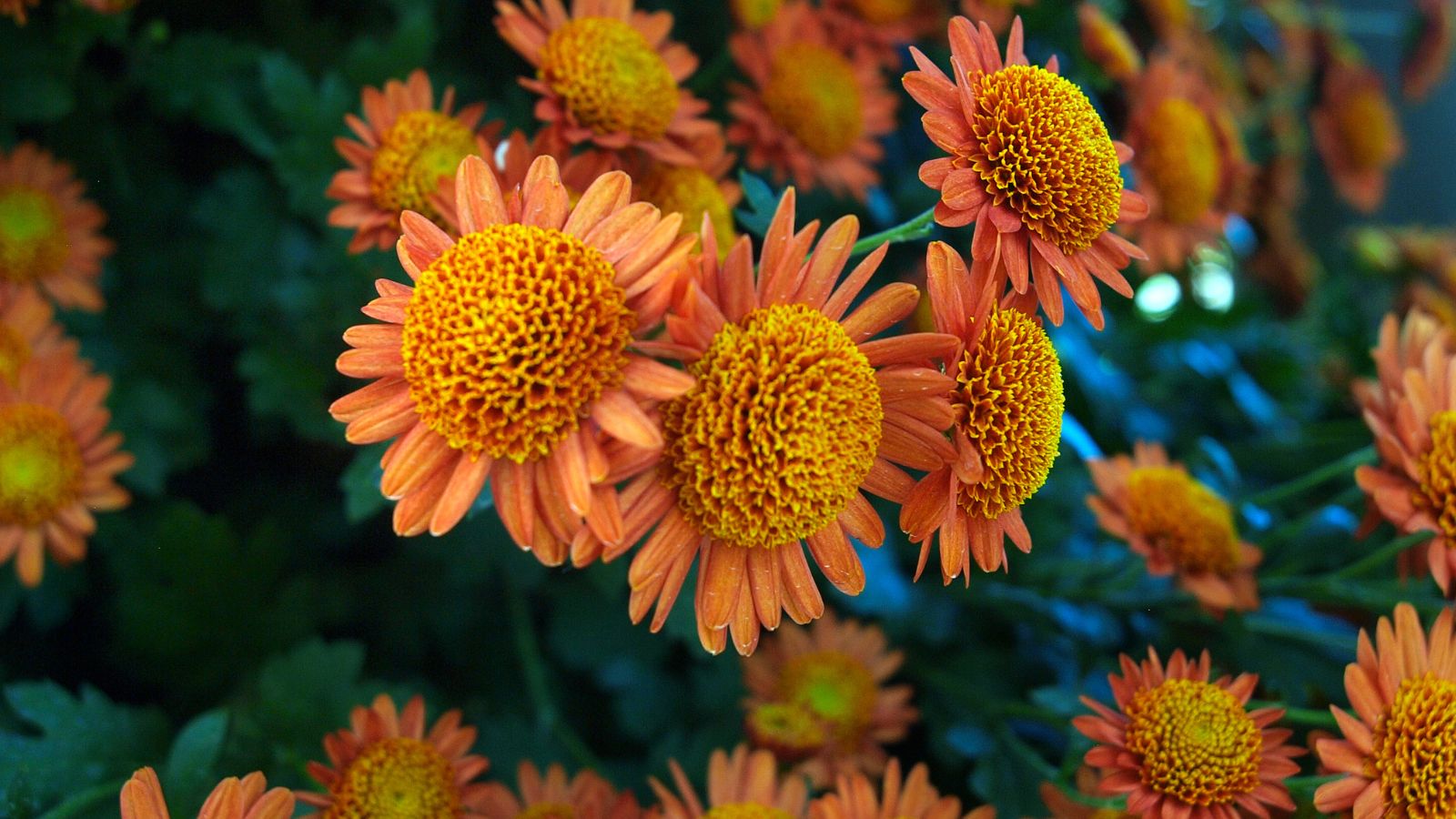
These mums feature raised, cushion-like centers surrounded by a ray of flat petals. The unique shape and texture of anemone mums make them ideal for cut flower gardens and arrangements. ‘Mancetta Sunset’ is the epitome of fall with its yellow center and pale bronze perimeters.
Spoon
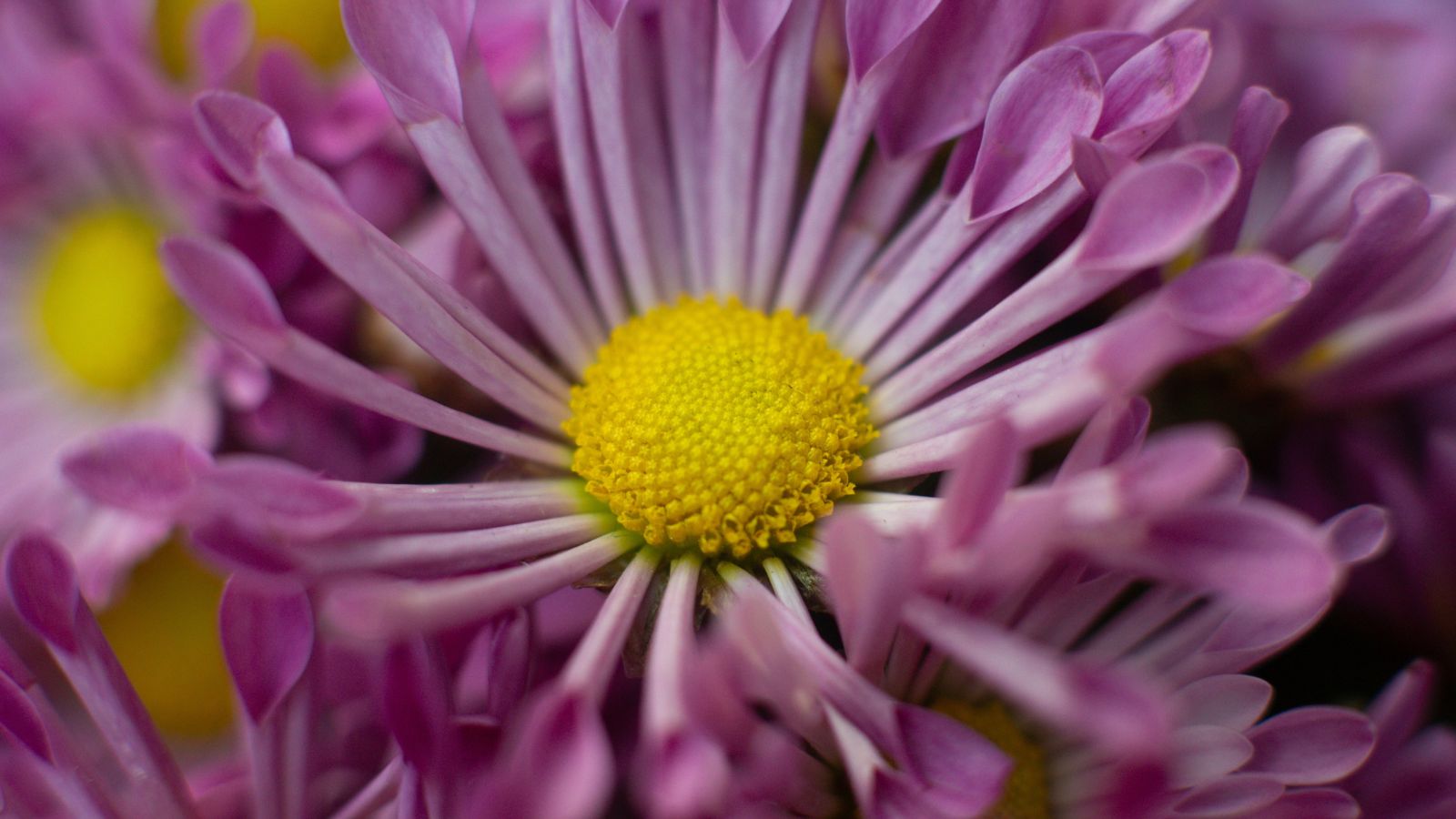
Unique and totally modern, this class is characterized by its ray of outer petals that resemble spatulas. Try ‘Matchsticks,’ which has yellow, tubular petals that curve up to show vivid red “spoons.”
Quill
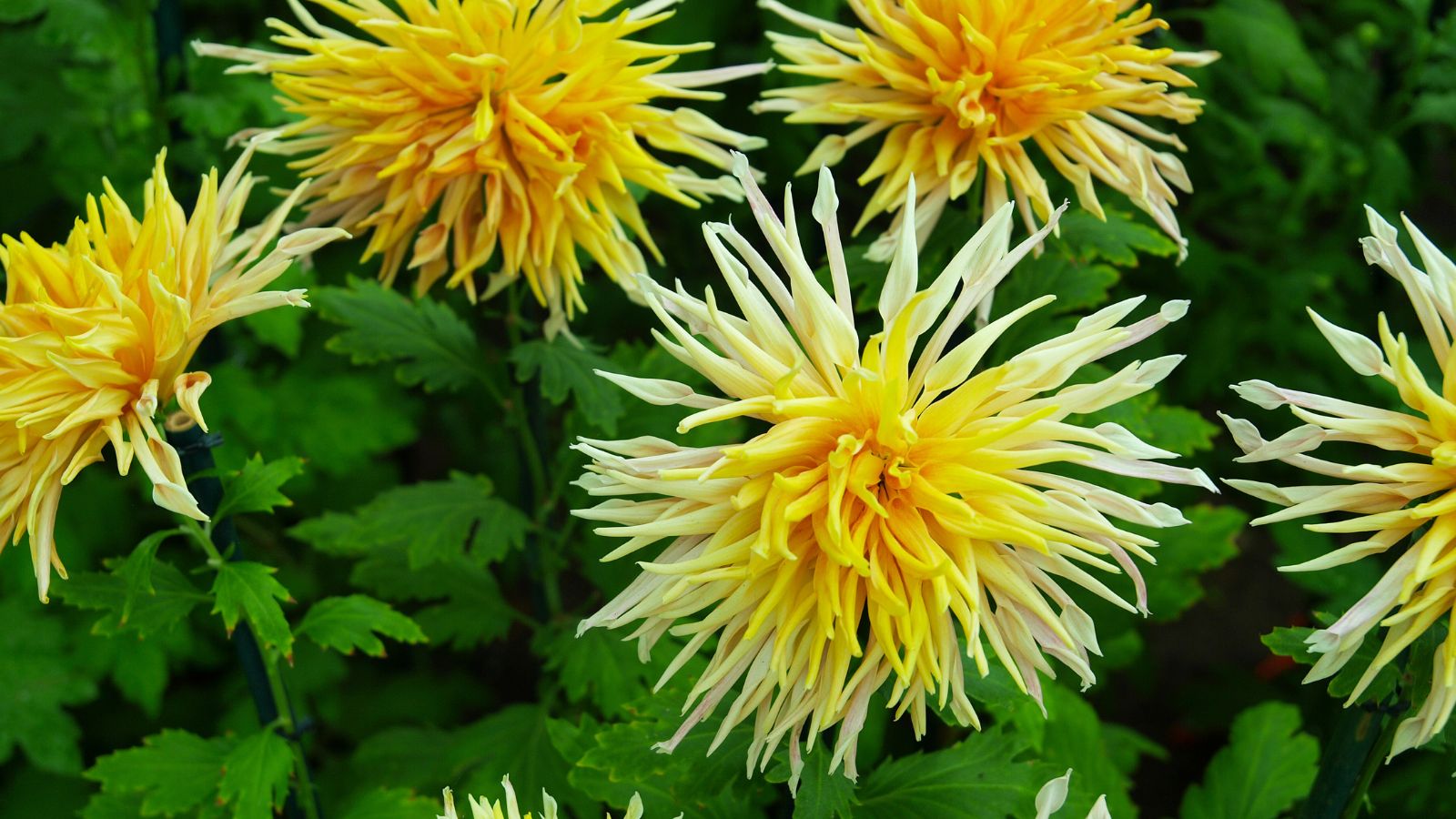
Quill mums exhibit bold, spiky shapes. Very large blooms erupt from very tall, sturdy stems. Pair rosy mauve ‘Seaton’s Ashleigh’ or ‘Lola’ with Sedum ‘Autumn Joy’ for an all-pink perennial bed.
Spider
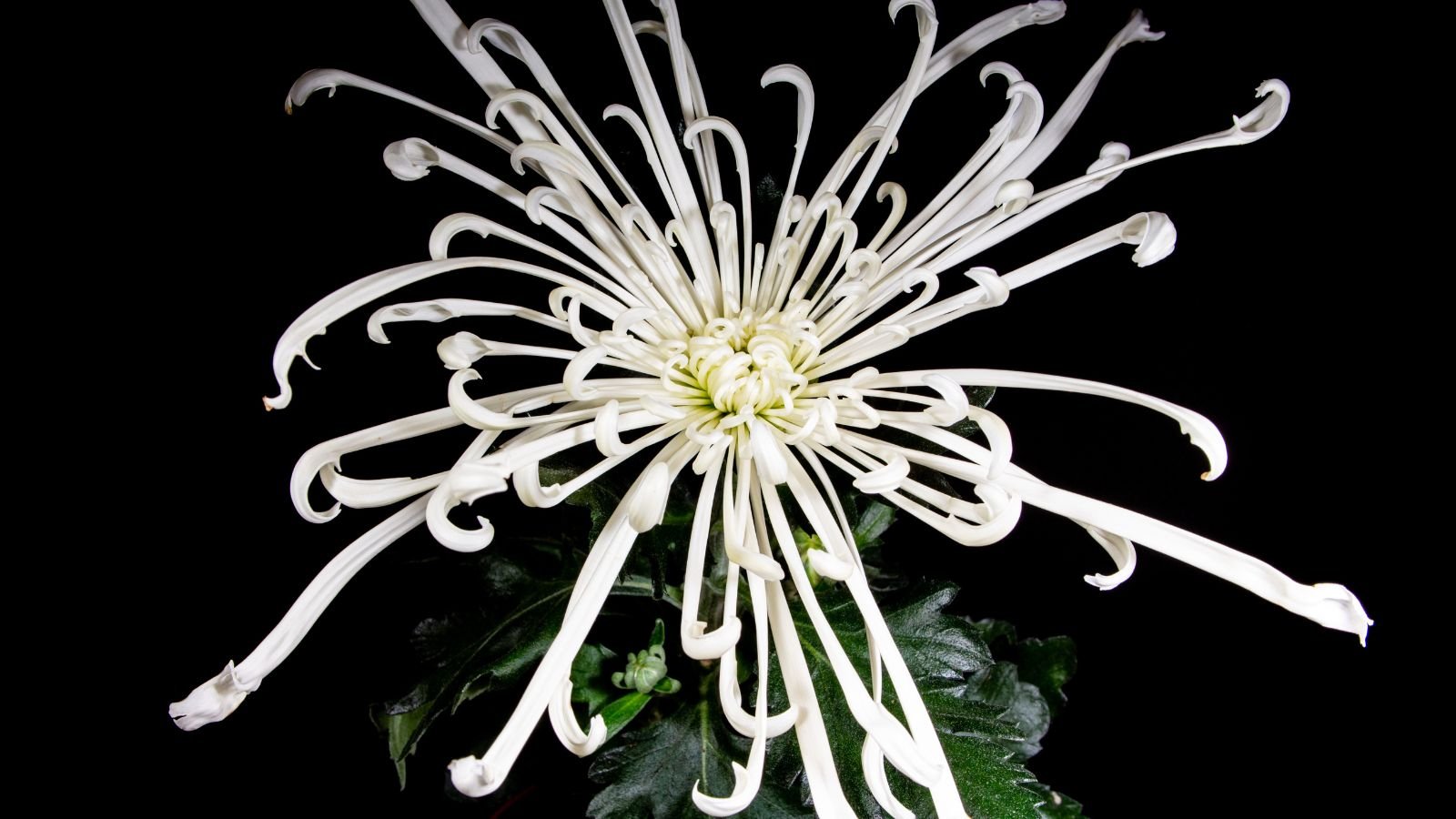
Undeniably the most interesting of the mums, spider types are definitely conversation-starters. They have long, thin petals that sprout in different directions, giving these blooms a delicate look that brings tons of texture to cut flower arrangements. Some cultivars have coiled ends. Exotic-looking ‘Lava’ sports yellow petals with soft orange tips, and ‘Fleur de Lis’ displays dramatic dark purple blooms.
Brush and Thistle
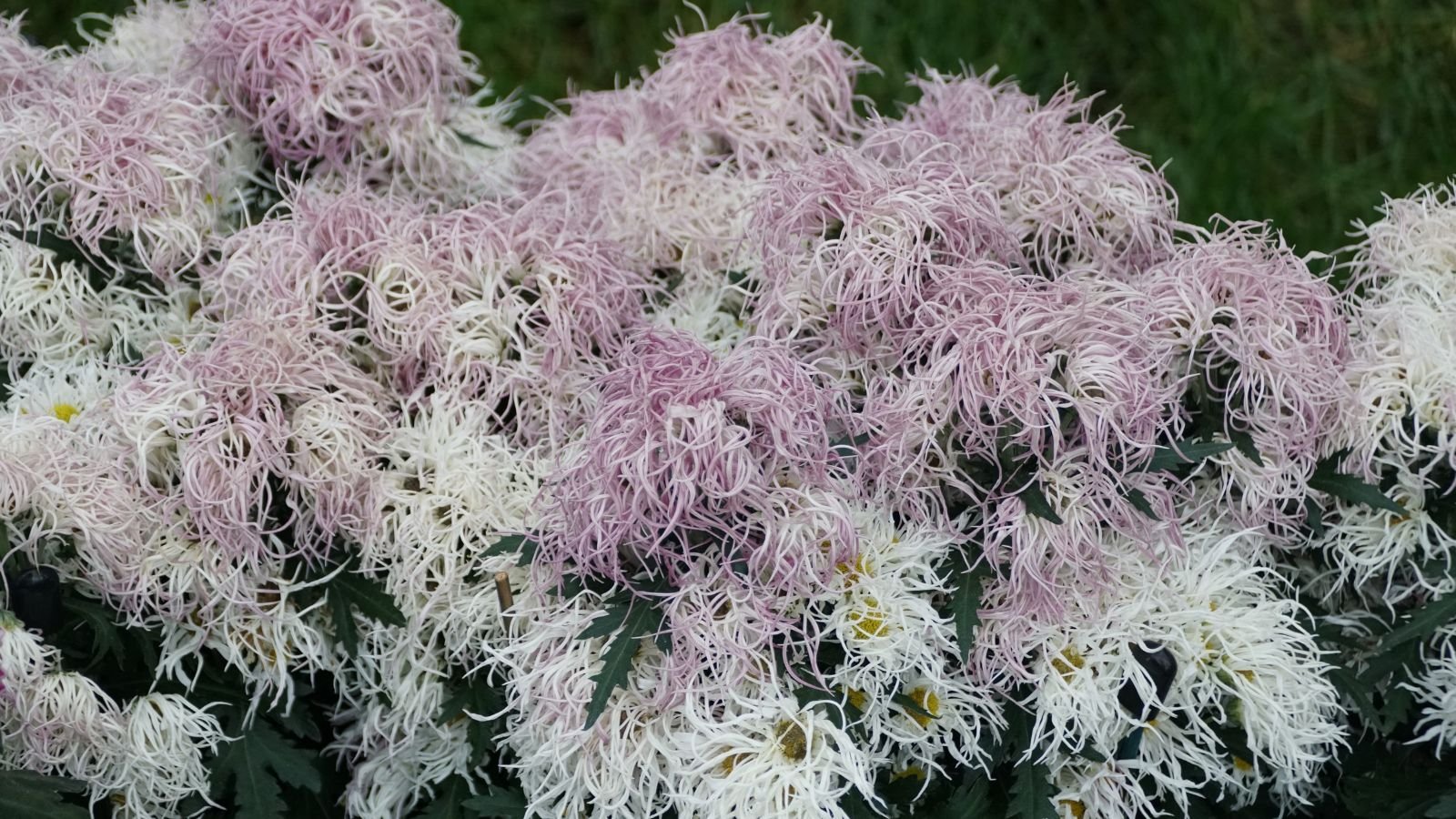
The delicate, thread-like petals of these mums do not open flat like the other classes. Instead, they point upwards, resembling a paintbrush. Try the diminutive, white ‘Saga No Yuki’.
Unclassified
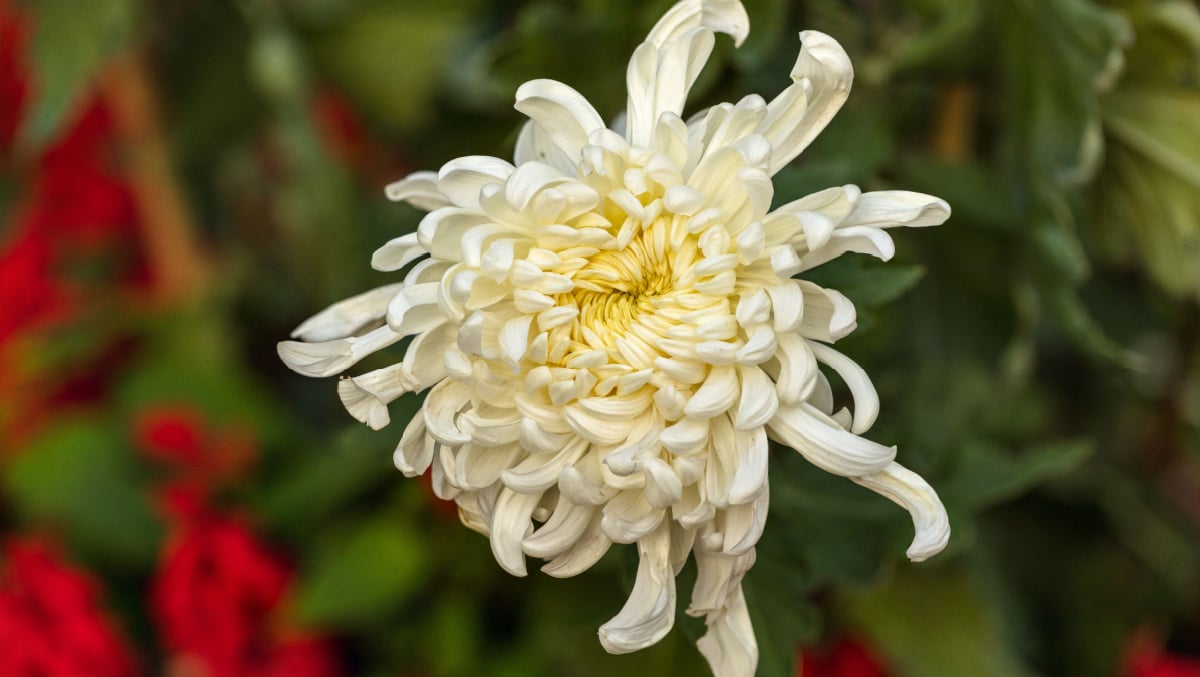
This is the catch-all that contains the other bloom types that don’t quite fit in any other class. Featuring exotic, twisted petals and rare color combinations, the mums in this class are not widely available at commercial greenhouses, although you may see them at chrysanthemum shows. ‘Lili Gallon’ displays curved shapes that are wine-red on one side and white on the other. ‘Satin Ribbon’ has curly details in soft pink.
Key Takeaways
By knowing your mums and selecting a healthy plant with plenty of lush foliage and buds, you can enjoy the best floral display all fall! As with all plants, try to purchase your mum from a reputable local greenhouse or nursery—you’ll be more likely to find healthy plants that are adapted to your regional weather.
